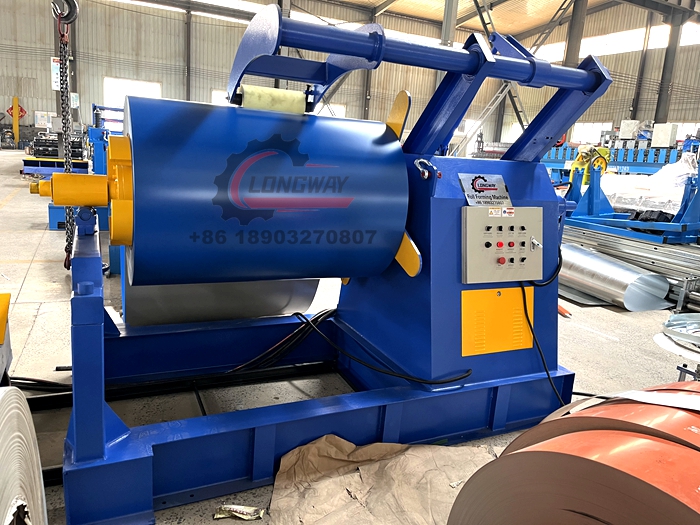High-Quality C Z Purlin Forming Machine Manufacturer for Efficient Steel Processing
The Evolution and Importance of C-Z Purlin Forming Machines in Modern Construction
In the ever-evolving realm of construction, efficiency and precision have become paramount. One of the pivotal advancements contributing to this is the C-Z purlin forming machine, a remarkable piece of equipment that has transformed the way purlins are manufactured for steel structures. This article will delve into the significance, operational mechanics, and benefits of C-Z purlin forming machines, highlighting their role in the modern construction industry.
What are C-Z Purlins?
C-Z purlins are structural components made of steel, primarily used in the framework of buildings, such as warehouses, factories, and commercial spaces. They are essential for supporting the roof and wall panels, providing stability and strength to the entire structure. The design of C and Z purlins varies, with ‘C’ shaped sections often used for the main structural frame and ‘Z’ shaped sections allowing for interlocking capabilities, which enhance the overall load-bearing efficiency.
The Working Principle of C-Z Purlin Forming Machines
C-Z purlin forming machines are specialized machines that process steel coils into precise C or Z-shaped profiles. The operation typically involves several key stages, including decoiling, leveling, shaping, and cutting the steel into the desired lengths.
1. Decoiling The process begins with feeding a coil of steel into the decoiler, which unwinds the coil for processing. 2. Leveling The leveled steel is then passed through a leveling machine, which ensures that the surface is flat and free from defects. 3. Shaping The leveled steel is then fed into the forming section, where it is shaped into either a C or Z profile using a series of rollers. This shaping process can be adjusted easily to produce various sizes and thicknesses, catering to different construction requirements. 4. Cutting Finally, the formed purlins are cut to length using a hydraulic shear or similar cutting system. This ensures maximum precision and reduces material wastage.
Advantages of C-Z Purlin Forming Machines
1. Customization One of the most significant benefits of C-Z purlin forming machines is their ability to produce customized profiles. Operators can adjust the machine settings to fabricate purlins that meet specific project requirements, allowing for versatility in construction.
c z purlin forming machine factory

2. Speed and Efficiency These machines are designed for high-speed production, significantly reducing the time required to manufacture purlins. This efficiency not only accelerates construction timelines but also plays a crucial role in meeting project deadlines.
3. Cost-Effectiveness By streamlining the manufacturing process, C-Z purlin forming machines help to reduce labor costs and material waste. As a result, they offer a more economical solution for contractors looking to optimize their operational budgets.
4. Quality Control Advanced purlin forming machines come equipped with technology that ensures consistent quality. Automated systems provide precise measurements and tolerances, reducing the risk of defects and ensuring that the final product meets industry standards.
5. Durability Steel purlins manufactured using these machines are known for their robustness and longevity. They withstand various environmental stresses, making them suitable for a wide range of applications.
The Future of C-Z Purlin Forming Technology
With the construction industry continually advancing, the technology behind C-Z purlin forming machines is also evolving. Innovations such as automated setups, smart manufacturing integration, and enhanced material handling systems are paving the way for even more efficient production processes. The adoption of Industry 4.0 technologies, such as IoT and AI, is expected to further enhance the capabilities of these machines, allowing for real-time monitoring and optimization of production lines.
Conclusion
C-Z purlin forming machines have proven to be indispensable in the modern construction landscape. Their ability to produce high-quality, customizable purlins quickly and efficiently has revolutionized construction practices, offering significant advantages in terms of cost, speed, and quality control. As technology continues to advance, these machines will likely play an even more critical role in meeting the growing demands of the construction industry, driving efficiency and innovation for years to come.
-
Roof Panel Machines: Buying Guide, Types, and PricingNewsJul.04, 2025
-
Purlin Machines: Types, Features, and Pricing GuideNewsJul.04, 2025
-
Metal Embossing Machines: Types, Applications, and Buying GuideNewsJul.04, 2025
-
Gutter Machines: Features, Types, and Cost BreakdownNewsJul.04, 2025
-
Cut to Length Line: Overview, Equipment, and Buying GuideNewsJul.04, 2025
-
Auto Stacker: Features, Applications, and Cost BreakdownNewsJul.04, 2025
-
Top Drywall Profile Machine Models for SaleNewsJun.05, 2025








